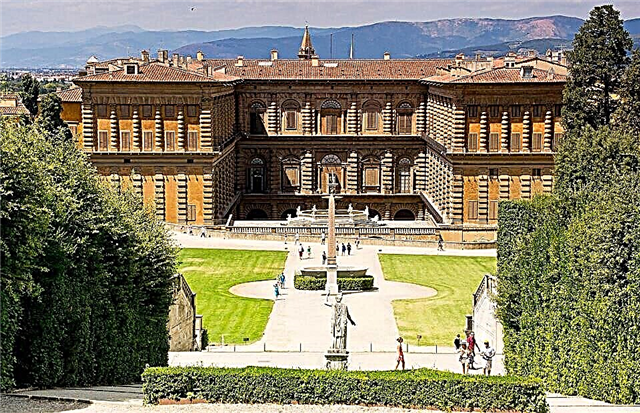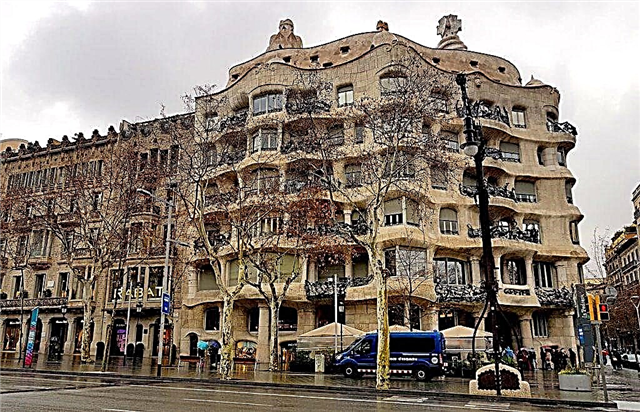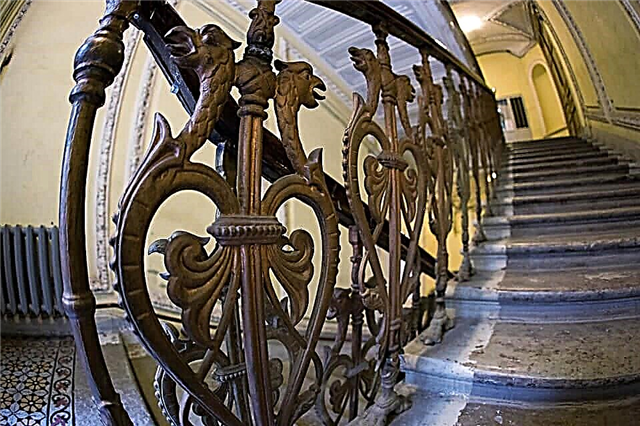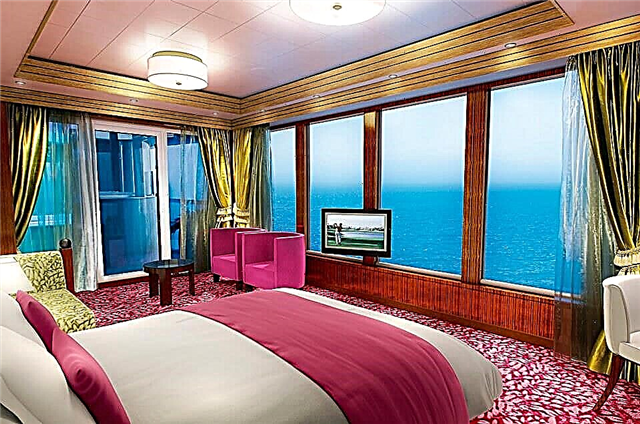There is no country in the world more amazing, mysterious and paradoxical than China. Chinese philosophers, scientists, inventors have done a lot to develop the technical and cultural progress of the planet. Silk, paper, tea, porcelain, spices and so on came to us from the Chinese. Many secrets are kept by its ancient history, captured in the architectural and religious monuments of the Chinese capital - Beijing. This article introduces the main sacred for the Chinese and interesting sights for tourists in Beijing, which has gone through many shocks over the past centuries, but has managed to preserve the heritage of history.
Forbidden City
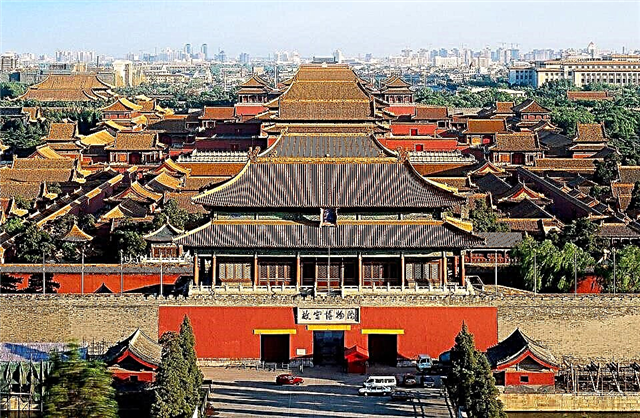
At its core, the Forbidden City (Gugong) is a large-scale palace complex built in the traditional Chinese style of Feng Shui, the forefather of Beijing. Created under the 3rd emperor of the Ming dynasty (1406-1420), the mini-city contains 9999.5 rooms, which cannot be bypassed in 1 day. Today it is a huge museum of the centuries-old history of the imperial dynasties and, in general, the country, stunning in its incredible size. Every day, huge crowds of tourists line up in front of the Gugun Gate to see all the splendor and wealth of the rulers of the past.
Here is a Chinese miracle - a carved marble slab, striking in its dimensions (weight 250 tons), depicting seas, mountains, clouds and against their background 9 dancing dragons. The gigantic figures of a bronze lion and lioness are also a miracle, only of foundry art, as well as a symbol of longevity - a giant cast-iron turtle. You can list all the treasures in the mega-museum for a long time, looking at them is great luck.
Gate of Heavenly Peace
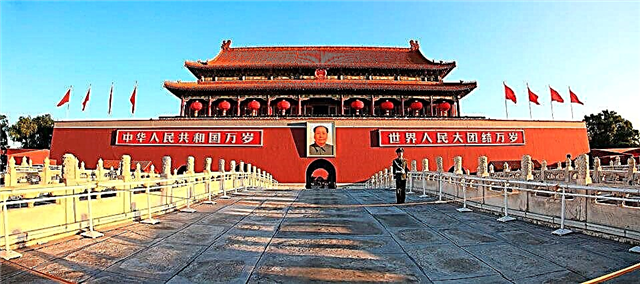
Such a pacifying name was given not only to the gate leading to the Forbidden City, but also to the large area (440 thousand square meters) in front of it. In Chinese, it sounds like Tiananmen - a word for a sacred place for the Chinese. Here is the Mao Zedong Mausoleum, where thousands of people come to bow to the leader. The Gate of Heavenly Peace is known for the sad events for the country: the shooting of students in 1989, the mass self-immolation of Falun Gong sectarians.
Various celebrations took place there: the coronation of emperors and empresses, the fateful performance of Mao Zedong with the announcement of the establishment of the PRC (1949), the annual celebration of the Republic's Formation Day, etc. architecture, enchanting with its originality.
Mausoleum of Mao Zedong
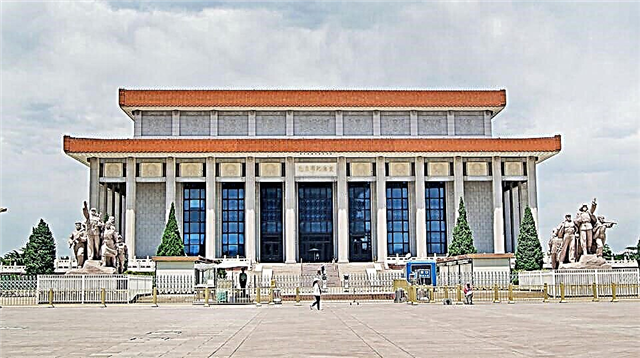
If you ask any Chinese what place in the city is the most sacred for him, he, probably, without hesitation, will answer - Mao-Zedong Mausoleum. The daily pilgrimage to the place where the body of the ruler of the fate of the people rests, vividly confirms this. Thousands of people line up at dawn to the sacred object. Some are driven by pure curiosity and a sense of duty, while others are driven by a sincere desire to pay tribute to the person who has chosen the course of the country's development towards a better life.
The mausoleum was erected in a short time, a year after the death of Mao, although he himself, back in 1956, signed an order on the posthumous cremation of the leaders. Despite this, the government decided to preserve the embalmed body of the Great Helmsman, as he was called during his lifetime. Visitors are not allowed to carry bags, liquids, photo and video equipment and cell phones - only money and a passport, the rest is handed over to the storage room. A 3.5-meter marble statue of Mao seated in an armchair "greets" everyone at the entrance. Many come with flowers, many cry, quickly passing by the sarcophagus with the body of the leader.
Monument to People's Heroes
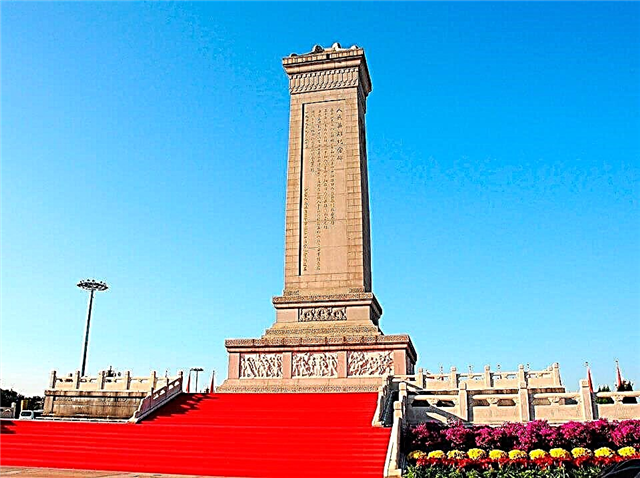
Monument 40 m high, located in the center of Tiananmen, Monument to People's Heroes - the history of the revolutionary movement in China, captured in marble. The pedestal is decorated with 8 bas-reliefs, each of which depicts a certain episode of this story: "Burning Opium" (1939), the uprising in the village of Jingtian (1850), the Wuchang uprising (1911), the "May 4" Movement (1911) ), Crossing the Yangtze (1949), etc.
The creation of the grandiose monument took 17 thousand marble and granite blocks, fastened so that the monument can stand for a thousand years. Along with the Mao Mausoleum, the majestic monument is the most visited site where those Chinese come, whose great-grandfathers participated in revolutionary events, and those who are not indifferent to the history of their homeland, and foreign tourists.
Sky Temple
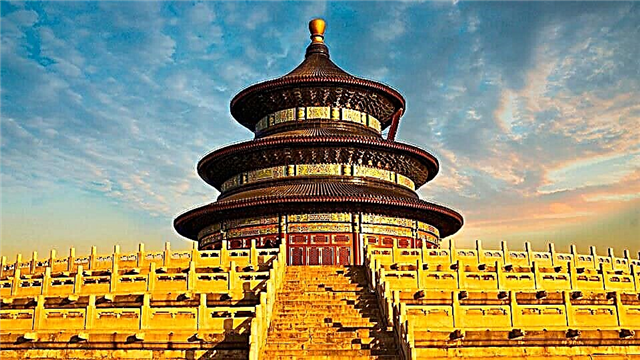
The ancient temple complex, together with the adjacent landscaped garden, symbolizing the connection between heaven (divine forces) and the Earth (Chinese emperors), was erected under the Zhuli emperor in 1420. It was intended for the prayers of emperors asking for good weather and harvests. The architecture of the Temple of Heaven is based on the philosophy of numbers - numerology. The temple altar is lined with a number of marble slabs in multiples of 9, which is considered the most powerful; 28 columns (Hall of Prayers for the Harvest) are arranged in 4 groups - symbols of 4 seasons, that is, there are columns, symbols of "months", columns-clocks.
Today, a huge park surrounding an amazing UNESCO-listed structure is accessible to ordinary citizens, which was not in imperial Beijing. Everyone can see a unique architectural monument here and walk in the park as much as they like. Most of the Beijing people are engaged in various types of gymnastics.
Yonghegong Temple
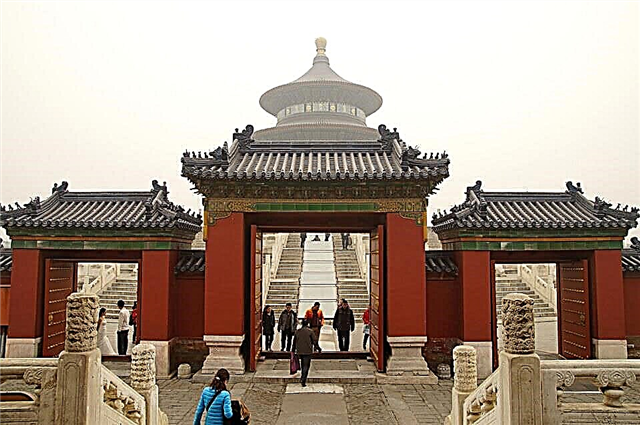
The ancient Buddhist temple of the 17th century, the name of which is translated as the Temple of Harmony, is of great interest to tourists. Under the emperors who owned the temple, a ceremony of commemoration of the departed ancestors was held here annually. In fact, this is a monastery still active today, home to 100 monks performing various rituals. One cannot but admire the original oriental architecture, numerous decorations outside and inside.
The gate leading to the Temple of Harmony is "guarded" by sculptures of mighty lions "installed on both sides. To reach the monastery itself, you need to go through 2 more gates: Zhaotaymen and Yonghemen. The entire area of the temple is divided into 3 pavilions isolated from each other, each of which bears a symbolic name. The main shrine of the Lamaist monastery is a tall (18 m) statue of Buddha, carved from sandalwood, dug into the ground at 8 m.
Temple of Confucius
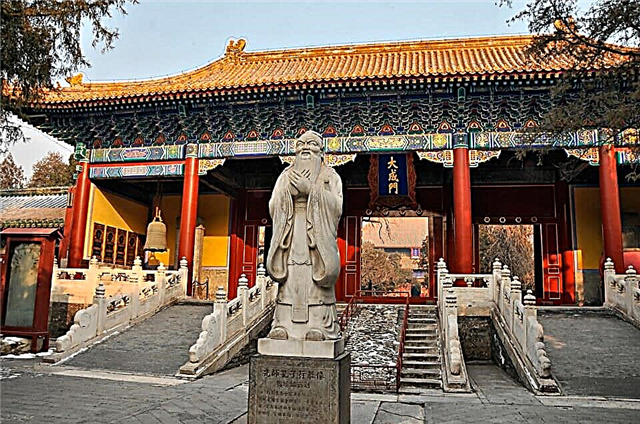
The temple, built in 1306 in honor of the great philosopher and scientist, has undergone repeated reconstructions, but a large part of the buildings have survived in their authentic form. All external and internal design of a huge structure is aimed at chanting scientists and teachings. At the entrance you can read wise sayings, poems inscribed on numerous stone-drums.
The centerpiece is the Pavilion of Learning, surrounded by slender cypress trees. Its walls are adorned with a continuous pattern of hieroglyphs that form philosophical sayings telling about the genius Confucius and his students, about the progressive rulers of China. Of the 50 thousand square meters, 30 thousand square meters is the inner courtyard of the Temple, and the rest of the territory is the Imperial Academy "Concentration of the Wise", which today has a symbolic status.
Temple of the Great Bell
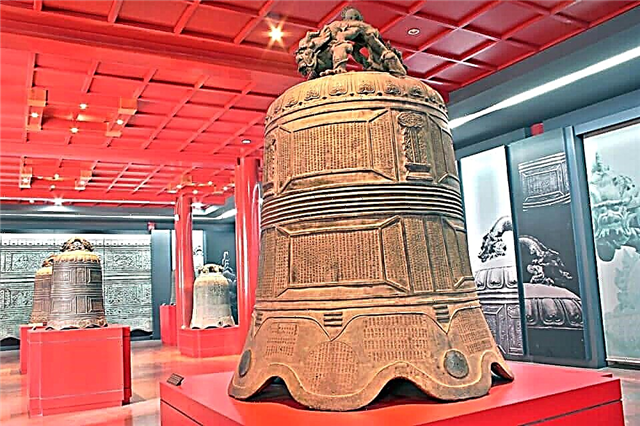
Under Emperor Jongle, the creator of the Forbidden City, the Big Bell, unique in its dimensions, was cast (height 5.5 m, weight 46 tons). A tower was built for him, on which the bell was raised in winter, when a heavy colossus was rolled into the tower on an ice rink. The temple around the Big Bell was erected already in 1773, and it became a place for imperial prayers for the welfare of the people, for rain, etc.
The bell ringing was heard for 15 km, its sound varied from the most gentle chimes to deafeningly loud and rolling overflows.The entire surface of the silver bell is covered with inscriptions with Buddhist sutras. On the temple grounds there is a museum (1985), which displays hundreds of all kinds of bells, cast not only in different provinces of China, but also in other countries. A visit to the Temple of the Big Bell leaves a deep impression.
CCTV headquarters

In the city, along with the monuments of antiquity, there are symbols of avant-garde architecture - modern skyscrapers, striking in their height and unusual design. These high-rise buildings include the headquarters of China Central Television (CCTV), located in the main modern landmark of the Chinese capital. The building, built in the style of deconstructivism, looks like 2 giant Ls connected at the top. The Beijing people called such an extraordinary design "pants", which they are still proud of.
The daring project of the Dutchman Rem Koolhaas is an example of a 21st century building that can withstand any earthquake. A whole team of engineers worked on the seismological stability of a 54-storey skyscraper with a height of 234 m. Two rectangular towers, tilted from the vertical axis by 6 degrees, are rotated so that they support each other. A reliable base-foundation consists of many interconnected cells that form a monolithic grid. The system of evacuation of people in case of emergency has also been carefully thought out.
Waning sono
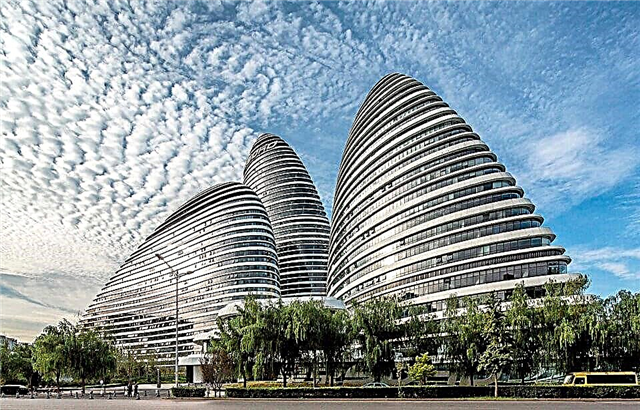
There is a Wanjing district in Beijing, where high-tech architectural structures rise, the futuristic appearance of which cannot leave anyone indifferent. 3 extraordinary buildings have been erected to meet the office needs of various international companies. The high-rise project in the style of deconstructivism was developed by the architect Z. Hadid (she is called the "queen of curves").
Indeed, in the erected aluminum-glass masses there is not a single right angle. Looking from a distance at these fantastic buildings, in which traditional windows are not visible, it is difficult to imagine the interior layout. Lighting is regulated by changing the width of the aluminum panels, all communications are subject to a single control system, which gives significant savings in electricity, water and heat. The Chinese compare the buildings to pond carps - they associate these fish with wealth and good luck.
National Museum of China
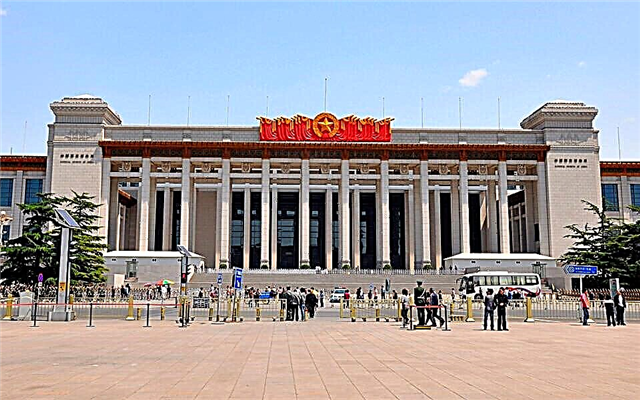
Opened in 1959 in a 4-storey building with 11 columns, the National Museum shared it with the Museum of the Revolution, but after many years of restoration of the building, the museums merged. Now there are spacious exhibition halls, which house more than a million exhibits, fully reflecting the history of the most ancient state of the planet - China. The expositions show objects of various eras, from the Neolithic to the present.
It's hard to believe, but the museum contains a unique rarity, the oldest exhibit, which is over 1.5 million. years - the remains of a Yuanmou man. The pride of the institution is a bronze tripod that belonged to the emperors of the Ding dynasty 3 thousand years ago. Its weight is 800 kg, no museum owns such a large bronze artifact of antiquity. The exhibitions of contemporary Chinese art, scientific achievements, and the national currency are of undoubted interest. There is a lot to see here.
Gongwangfu
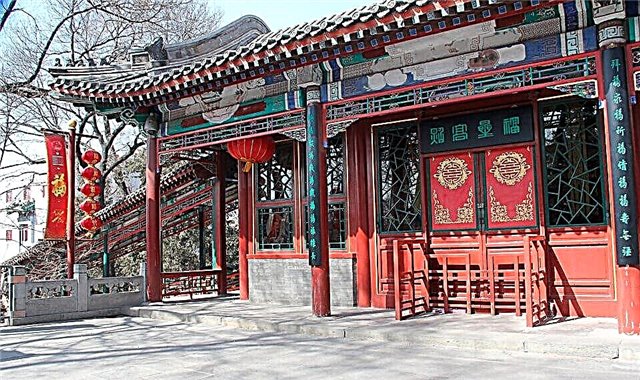
The most beautiful palace and park complex that once belonged to Prince Gong is located among the remains of the old city in the western part of Beijing. The palace, built in 1777 for the influential nobleman and favorite of the emperor, Hashen, is a veritable architectural gem of Beijing. Transferred in 1851 by the then emperor as a gift to his brother, who bore the high title "Gong", the palace became known as Gongwangfu. The fate of the palace was sad until 1982, but after its recognition as a cultural heritage site, intensive restoration began, the collection of looted property, and the restoration of the garden. Today, hundreds of tourists walk among the landscape splendor, admire the amazing decoration of the facades, the interiors of the palace halls, admiring the talent and skill of Chinese craftsmen.
Beijing National Stadium
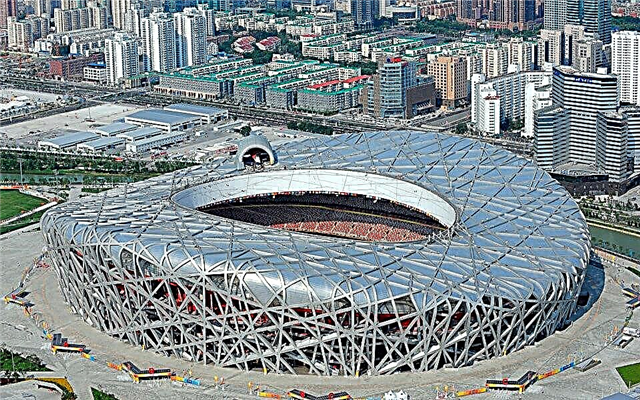
The stadium, built for the 2008 Olympics, resembles a bird's nest in its shape, for which it is unofficially called so. World famous architects took part in the development of the project, such as the winners of the competition - the Swiss designers Herzog and Meron. The National Stadium is a synthesis of architectural minimalism, steel and concrete, surprising with its originality and grandeur of a design made to last.
The construction, which can accommodate 80 thousand spectators, took 45 thousand tons of steel with a length of 36 km rolled. The stadium located next to the swimming complex looks like some kind of fantastic giant ship, reflected in the waters of the lake. It looks especially enchanting at night, colored from the inside with electric lighting. Against the backdrop of fashionable skyscrapers, the National Stadium has successfully blended into the modern look of Beijing.
Summer imperial palace

To call the wonderful world of mysterious and colorful beauty a palace is too modest. In fact, this is a solid imperial residence, on the space of which there are 3 thousand different buildings: unique bridges, palaces, temples against the backdrop of incredibly beautiful landscape paintings. Everything that has been created here is the most valuable cultural heritage of the world, delighting everyone who comes to this fabulous kingdom.
On the slope of Wanshou Mountain (Longevity) is the most visited site - the Great Reward for the Mercy of Longevity Temple. The local gallery-corridor strikes the imagination, on the walls of which there are almost 8 thousand paintings, marble sculptures of dragons and lions are installed. There is also a symbol of the power of the imperial family - the Marble Boat. Crowds of people come to the Kunming Artificial Lake, especially when the divine lotuses are in bloom. You can walk around the residence, which is essentially a huge museum, for long hours, admiring the masterpieces of Asian art.
Yuanmingyuan Park
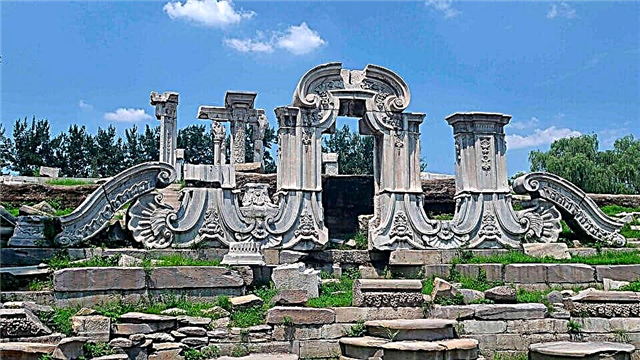
A little to the east of the Summer Residence, there is a landmark that serves as an example of how man-made miracles, created with one hand and mind, can be destroyed with other hands and mind. Only by the majestic remnants of the former luxury and beauty can one judge now how magnificent the Yuanmingyuan Park (garden of perfect clarity) was during the reign of the Qin emperor Kangxi dynasty. The most luxurious palaces, comparable in the perfection of decoration with the best works of art, were surrounded by a huge park, with artificial reservoirs, picturesque alleys, and many sculptures.
But under the next emperor, the territory of the garden increased 5 times compared to the area of the Forbidden City, its cultural and artistic content exceeded even the Vatican. The prosperity of Yuanmingyuan Park ceased in the fall of 1860, when the Vandal invasion of the Franco-English army caused irreparable damage to it. Today, only separately preserved ruins of palaces and park structures remind of their former splendor.
Beihai park

West of the Forbidden City there are 3 lakes, which were once called seas: North, Central and South. Here, beautiful imperial gardens were laid out around them - witnesses of how the Chinese rulers loved to pamper themselves, surrounding their life with unprecedented luxury. Now Beihai Park is a popular place to visit and an interesting attraction, while examining it, you mentally forgive those in power for their narcissism and thank them for creating such grace. The long-suffering history of the park began in the 10th century.
Having survived the devastation and decline, Beihai Park acquired a new face in 1925, after a grandiose restoration in 1949, it became the most beautiful and favorite place in the Chinese capital.The most visited sites are the Jade Island, with unique religious buildings; the Chshizhan bridge leading to the island; White Dagoba (Buddhist Church) with sacred rarities stored in it; Shanindian Pavilion; Temple of Eternal Peace, etc. Everything that is here is worthy of admiration!
Peace park
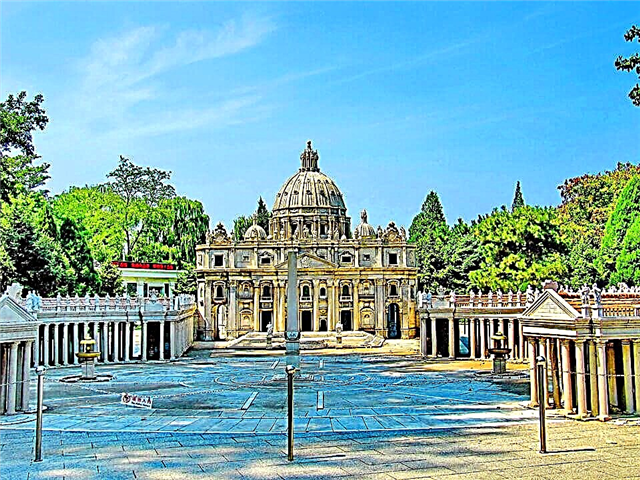
An entertaining and educational place called Peace Park gives an unforgettable experience to visitors of all ages. No one leaves here disappointed, because here you can not only see the famous buildings of the world in miniature copies, but also get the thrill of exotic entertainment such as feeding an elephant. Among the mini-objects are the native Red Square with a miniature temple complex, the Eiffel Tower, Egyptian pyramids, Niagara Falls, English and French medieval castles, the Great Wall of China, etc.
The central "patch" of the park is very beautifully decorated with green lawns with landscape "drawings" and thematic sculptures along the edges, picturesque fountains. On a wonderful large pond, through which a wonderful bridge is laid, they ride on mini-boats, river trams and catamarans. It is a great pleasure for everyone to interact with rare animals, for example, riding a red deer. After the excursion, there is an opportunity to relax under the shade of trees on comfortable benches in the floristic part of the park, enchanting with its neatness and cleanliness.
Botanical Garden
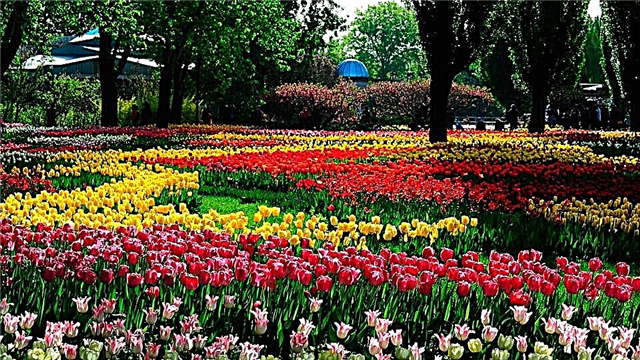
At the foot of the Xianshan Mountains, near the Iheyuan Park, the Beijing Botanical Garden is spread over 130 hectares, the area of which includes mountain slopes and plains. The main part of the entire territory of the garden is planted with trees and shrubs (more than 100 thousand), several hundred herbs. A narrow stream flows along the garden, with rocky rapids and banks. Cascades made of stone make it very picturesque. Flower gardens skillfully decorated by landscape designers fascinate with their beauty: a stunning rose garden, a large collection of magnolias, lawns of peonies, various thematic gardens are presented, the garden grows 60, for example, in peach varieties of delicate fruits.
Touches the garden of miniature trees - bonsai. Despite the small height of some specimens, their age is 1300 years. Interesting structures made of stones on trays - suiseki, sculptural compositions are impressive. For walks, special paths are equipped, winding throughout the territory, there are restaurants and cafes for visitors.
Beijing TV Tower
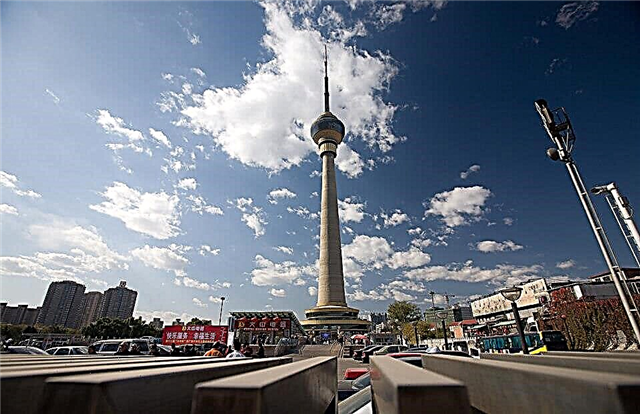
Those who would like to see Beijing from a bird's eye view should visit the Beijing TV Tower, which is not only an office and broadcasting institution, but also a kind of entertainment facility. Inside the high-rise (405 m) there are museums, the expositions of which acquaint with the history of the development of TV in China. Here they are allowed to test themselves as a presenter, taking a chair in front of the camera. It has become a tradition to hold speed races, when participants make 2 circles around the base, and then climb up 1,500 thousand steps.
Tourists experience a real delight, examining the stunning panorama of the city from the observation deck (238 m), shouting into the hole of a huge pipe so that all residents of the capital can hear them (as the electronic loudspeaker guide claims). An equally interesting sight awaits visitors in the underground center "Underwater World of the Pacific Ocean", where everyone walks through a tunnel with transparent walls, behind which the exotic world of the ocean opens up from the side and from above. Green algae, red corals, fantastic fish, jellyfish.
Marco Polo bridge
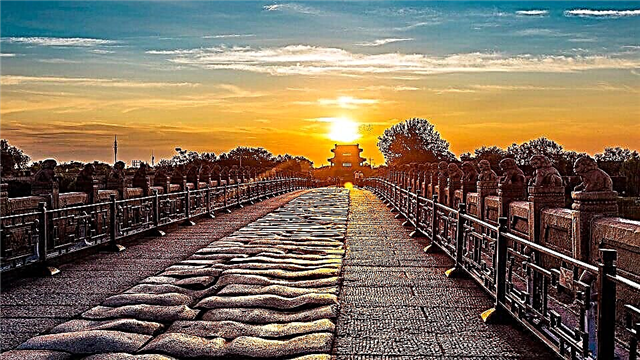
On this pedestrian bridge, thrown across the river. Yongdinghe, tourists and Chinese are attracted by numerous stone lions and lionesses, which show the "gray hair" of the Middle Ages. The 10-span stone bridge was erected in 1698 to replace the granite ferry that had been washed away by the flood. The building was hosted by the Kangxi emperor, marked by a stone stele at the western end of the bridge. In some sections of the pavement (length 266.5 m), authentic marble slabs have been preserved, which have captured the traces of the past centuries.
Of the 482 preserved carved statues of lions, not a single image is repeated, so they can be viewed endlessly. The width of the bridge is almost 10 m, and it can accommodate hundreds of people. And although there is no river water under the bridge, it has not lost its popularity. The Chinese call it Lugoqiao, and the Europeans call it the Marco Polo Bridge, believing that it was he who was mentioned in the travel notes of the great navigator.
National Center for the Performing Arts
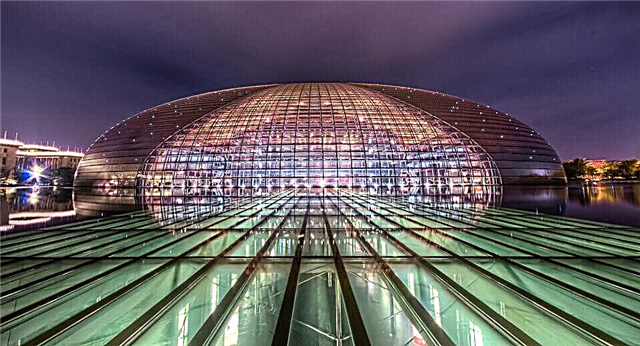
It took 6 years to build a truly outlandish structure, now considered a wonder of the world of our time - the National Center for the Performing Arts. In 2001, it was decided to build an opera house, but when the grandiose project was implemented in 2007, its futuristic embodiment required a wider purpose and name. The French architect P. André presented the building as a drop floating on the surface of the water, so the egg-shaped building is surrounded by an artificial lake.
The architectural masterpiece consists of a main elliptical building, underwater and underground corridors. The ellipse is 212 m long, 144 m wide, 48 m high, made of 18 thousand titanium plates and 1200 glass sheets. The structure goes down 32.5 m (10 floors) - the scale of the project is amazing! The opening of the Center was marked by a performance by the Mariinsky Theater of Borodin's opera "Prince Igor" (conducted by V. Gergiev).
Zoo

Occupying 86 hectares of land, the zoo is famous all over the world as the only owner of a giant panda. The entire territory of the zoo is divided into thematic groups: Monkey Hill, Bear Mountain, Lake of Waterbirds, etc. More than 5 thousand animals of 450 species live in them. The sections were laid out according to the principle of Chinese gardens, with ponds, channels, bridges, rocks, willows leaning over the water, which makes the area very picturesque.
One of the most visited sites is the Giant Panda Pavilion, which is visited by thousands of visitors every day. They look not only at the panda, but also the interesting sculptural compositions decorating the pavilion, depicting an amusing bear family. Not deprived of attention and predators living in spacious open-air cages among natural nature. Walking around the zoo is not only acquaintance with representatives of the fauna, but also contemplative enjoyment of the surrounding beauty of the landscape.
Shijingshan amusement park

A grandiose leisure center covering a colossal area of 35 million square meters, Shijingshan Amusement Park is the focus of modern dizzying attractions, beautifully designed territory and a truly fabulous atmosphere with the presence of familiar characters. A visit to this amazing park, opened in 1987, is a pleasure for children and adults. All entertainment and educational objects are divided into thematic sectors.
For example, the Eastern Sector - artificial gorges, a rapid mountain stream for rafting, caves with treasures, etc. Adventure land - Mayan labyrinths, a pirate ship, Jurassic Park with dinosaurs. Fantasy world - all kinds of attractions for preschoolers. There is a Gothic castle where Cinderella lives, 4-D-c / theater, roller coasters, a 50-meter Ferris wheel, and much more that captures the imagination.
Happy Valley Park
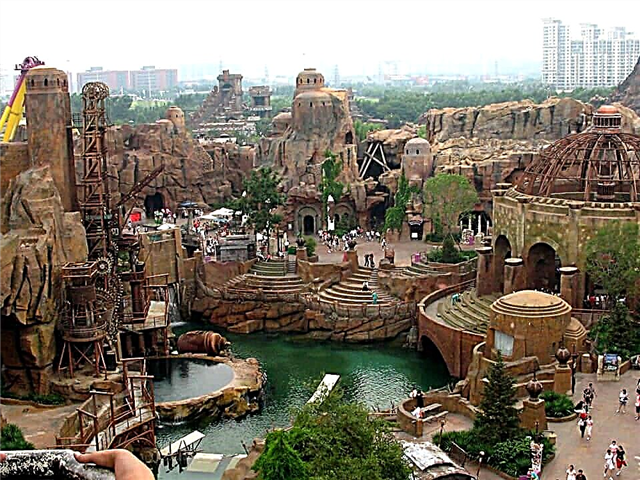
How could the ubiquitous Chinese do without an analogue of American Disneyland !? The Happy Valley amusement park, created by them, has outdone the famous American facility in its own way, adding Asian mystery and oriental motives to the design of the huge area of their park. Now there are more than 120 various attractions for every taste. All of them are located in 6 thematic zones, the central of which is "Atlantis" - a fantastic embodiment of an ancient civilization.
There is no limit to children's delight from "immersion" in the mysterious world of antiquity, fairy-tale plots and characters. They are happy to recognize their favorite cartoon characters, presented here in a wide variety. Adults test their courage on extreme roller coasters and water slides, giant swings with an incredible range of flight. The park organizes costume performances, processions, theatrical shows.
Lake Houhai
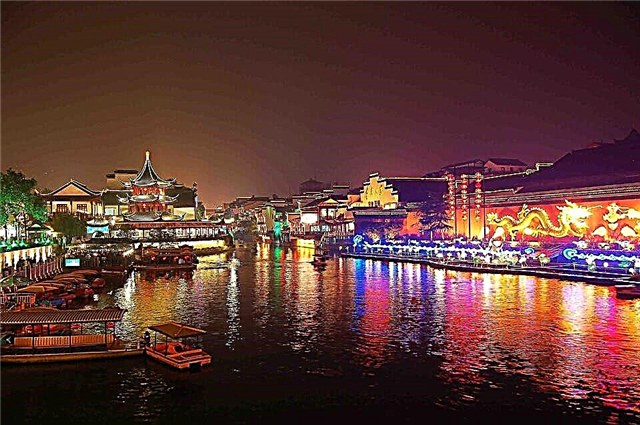
In the Shichahai region, there is a corner of almost pristine appearance - the artificial lake Houhai, created a long time ago for the imperial family. It has become a popular holiday destination for modern Beijing people who come here at any time of the year. In summer they use boats and catamarans, in winter they go ice skating and sledding.
Many cafes, restaurants and souvenir shops have sprung up on the shores of the lake. Children love to feed the ducks that live in the reservoir here, adults walk along the beautiful embankment. When the water freezes over, the lake turns into an ice rink filled with Beijing people of all ages.

